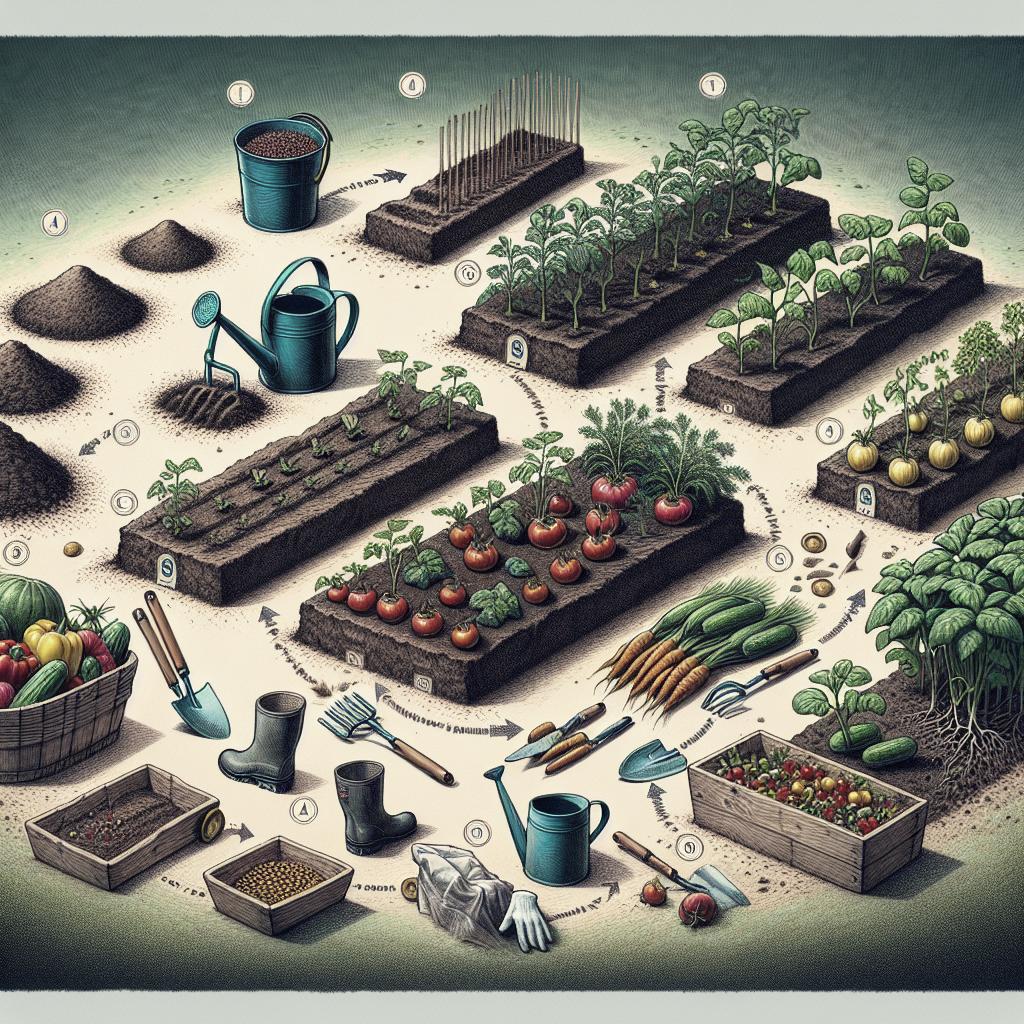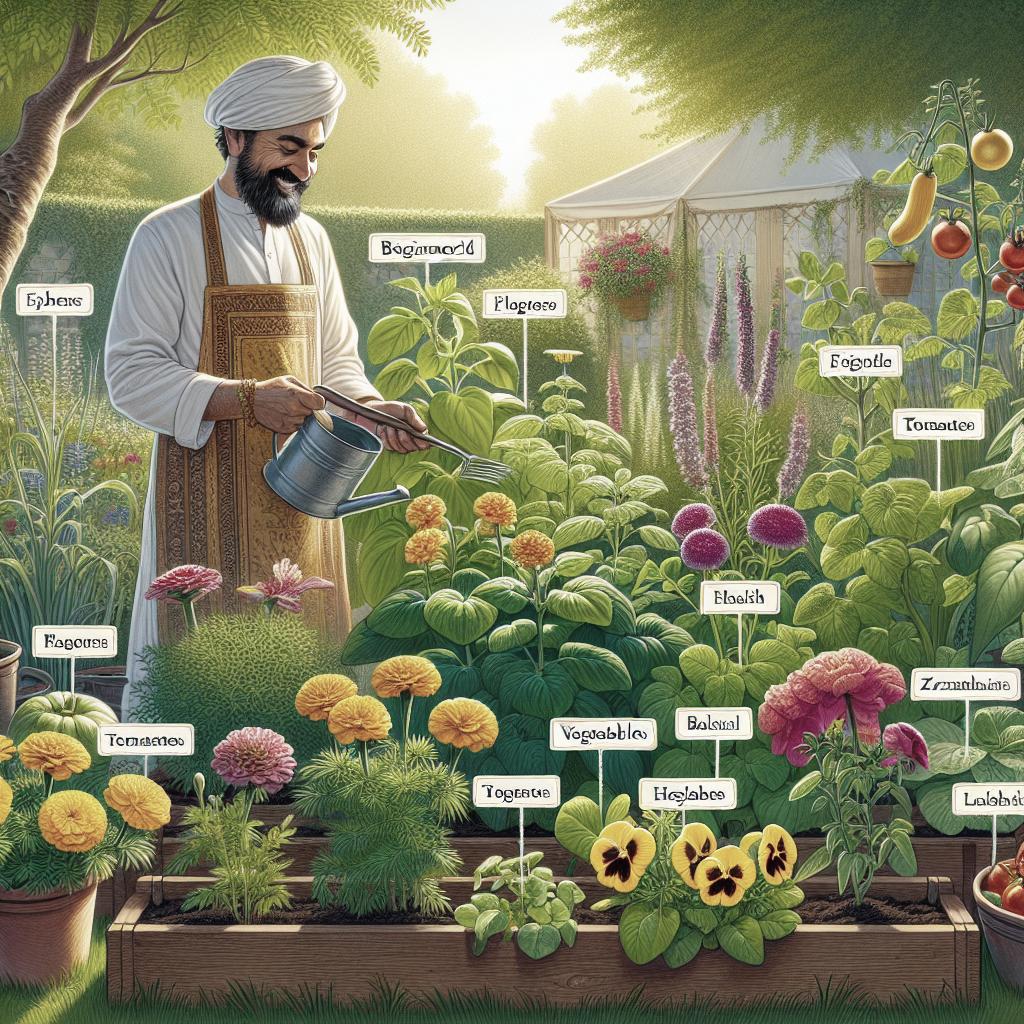“`html
Steps to Planting a Wildflower Meadow
Creating a wildflower meadow is a beautiful and rewarding endeavor that not only enhances the aesthetic appeal of your garden but also supports local biodiversity. In this comprehensive guide, we will explore the essential steps to create your very own wildflower haven. From preparing your chosen site and selecting seeds to planting perennials and controlling weeds, each phase is crucial for the meadow’s success. We’ll also look at innovative garden planning tools and ways to stay proactive against garden pests. Immerse yourself in nature by transforming your space into a vibrant ecosystem with our step-by-step instructions and tips.
1. Prepare the Site
The journey to a flourishing wildflower meadow begins with well-prepared groundwork. Selecting the right spot is essential – choose an area that receives ample sunlight and has healthy, well-drained soil. If the soil is overly compact or nutrient-deficient, consider incorporating organic matter to enhance its quality. Clear the existing vegetation and debris to ensure your seeds have the best chance to thrive.
Once the area is cleared, you might need to test the soil’s pH level to guarantee it aligns with the wildflowers you plan to grow. Ideally, aim for a pH between 6.0 and 7.0. For more cohesive growth, consider lightly tilling the soil. Remember, this phase of preparation sets the stage for your meadow’s success.
2. Start Seedlings in Flats
Starting your wildflowers from seedlings can offer them a robust head start. Using flats, or seed trays, allows you to nurture seedlings in a controlled environment before transplanting them to your prepared meadow site. Begin by filling your flats with soil mix specifically designed for seed starting.
Take care to plant seeds at the depth recommended on the seed packet, ensuring they remain adequately moist until germination occurs. Once the seedlings have developed their true leaves and are strong enough, they can be gradually introduced to the outdoor conditions before final planting.
3. Plug in Perennials
Adding perennial plants to your wildflower meadow can foster a more diverse and long-lasting ecosystem. Perennials return year after year, forming the backbone of your meadow and providing continuous interest throughout the seasons.
Introduce these plants by ‘plugging them in’ – a method where young plants are inserted into pre-dug holes. This technique reduces transplant shock and allows the perennials to establish more quickly. Proper spacing is vital to prevent overcrowding and ensure each plant has ample room to reach its full potential.
4. Plant in Good Weather
Tuning into the weather when planting is crucial to the success of your wildflower meadow. Ideally, plant during milder conditions to avoid stress on nascent plants. Overly hot or cold weather can impede initial growth and establishment.
Spring and early autumn are generally the best times for planting, as temperatures are moderate, and there is usually sufficient rainfall. During these seasons, new plants can capitalize on favorable conditions before facing extreme weather. Monitor forecasts and select a window where the climate will support, rather than hinder, growth.
5. Pull out Weeds
While wildflowers are skilled at competing with grass and other vegetation, the presence of weeds can choke out young plants and deprive them of essential nutrients. Regularly inspect your meadow for invasive species, especially during the early stages of establishment.
Hand-pulling is an effective method for controlling weeds without disturbing the soil or harming desirable plants. Persistence is key – consistent weeding in the first year can significantly impact the overall health and balance of your wildflower meadow.
6. Let Plants Shed Seeds
Allowing your wildflowers to complete their life cycle is critical to the sustainable growth of your meadow. As blooms fade and seed heads form, resist the temptation to deadhead. By letting plants drop seeds naturally, you encourage self-seeding, which perpetuates the meadow year over year.
This natural reseeding ensures a dynamic and evolving landscape, adding intrigue as new plants emerge and others intensify. The resulting seed bank also becomes a rich resource for native wildlife, supporting pollinators and other beneficial organisms in your ecosystem.
7. Keep Planting!
A wildflower meadow thrives on diversity, which means your work doesn’t have to end after the initial planting. Over time, you may notice certain areas thinning or new gaps opening up. Take these opportunities to introduce fresh plant varieties or increase existing populations.
Periodically supplementing your meadow with new seeds or plants can sustain its vibrancy and resilience. Cultivating a meadow is an ongoing process that benefits from thoughtful experimentation and adaptation.
Garden Planning Apps
Incorporating technology into gardening practice has never been easier than today. Garden planning apps offer tools that can help streamline your wildflower meadow planning process. These apps typically provide interactive features such as planting calendars, design templates, and space calculators.
Many apps offer valuable insights into companion planting, weather conditions, and even pest management solutions, ensuring you make informed decisions to maintain your meadow’s health and beauty. Leveraging these digital resources can enhance your efficiency and success in nurturing a thriving haven.
Want to Receive Alerts When Pests are Heading Your Way?
Staying ahead of pest invasions can mitigate potential damage and encourage proactive solutions. Some garden planning apps offer alerts when pests common to your region are likely to appear.
These alerts enable you to take protective measures, such as applying organic deterrents or supporting natural predators within your meadow. Access to real-time data empowers you to safeguard your flora effectively and sustainably.
Comments
We would love to hear about your experiences and tips for cultivating wildflower meadows. Feel free to share your thoughts, questions, or stories in the comments below. Let’s inspire each other on this exciting gardening journey!
Final Thoughts
| Step | Action |
|---|---|
| 1 | Prepare the site by selecting a sunny location, clearing debris, and improving soil quality. |
| 2 | Start seedlings in flats for a controlled growth environment before transferring them outdoors. |
| 3 | Plug in perennials to establish a long-lasting and diverse plant community. |
| 4 | Plant during mild weather to aid initial plant establishment. |
| 5 | Regularly remove weeds to minimize competition and maximize plant growth. |
| 6 | Allow plants to shed seeds naturally to promote self-seeding and ecosystem sustainability. |
| 7 | Continuously add new seeds and plants over time to enrich biodiversity. |
“`


